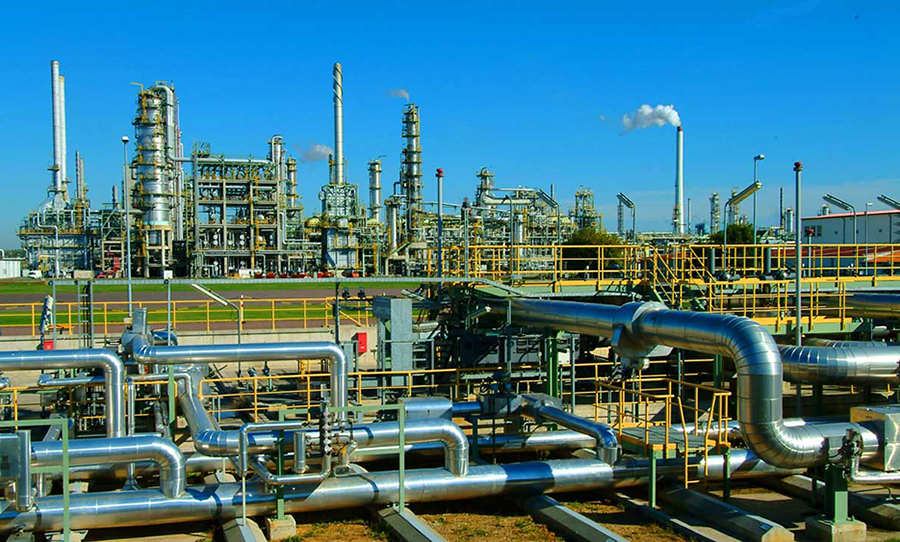World
The Impact of COVID-19 on China’s Belt and Road Initiatives in Africa

A new report by Economist Corporate Network, supported by Baker McKenzie and Silk Road Associates, BRI Beyond 2020 (report), shows that the ripple effects of COVID-19 are affecting the nature, pace and scope of China’s Belt and Road Initiative (BRI) activity in Africa, mostly for the short term.
The report also explains how the virus has led to an increased interest in digital programmes in BRI countries, as well as a heightened focus on sustainability, including workforce health. The BRI is China’s multi-billion dollar plan to link Asia, Europe and Africa.
“The COVID-19 epidemic definitely has a dampening effect on BRI activities as Chinese companies focus their resources and efforts on dealing with the various types of impact caused by such epidemic.
“However, this effect will likely be relatively short term and we are already seeing the resumption of BRI activities by our Chinese clients.
“It is also heartening to see foreign sellers and partners adjusting their deal timetables to make allowances for the impact caused by this epidemic,” says Bee Chun Boo M&A Partner at Baker McKenzie in Beijing.
Ben Simpfendorfer, CEO of Silk Road Associates, explains in the report that the BRI will remain a priority for China, but that it will affect the Chinese government’s short-term and long-term response to COVID-19, because shortfalls in China’s health sector, and the economic fallout for the country’s financially challenged SME sector, will divert official attention and resources away from BRI over the next 12 months and potentially longer.
“This may mean reduced investments into BRI’s smaller, less critical markets where the opportunities to connect such investments to the global supply are limited. Central Asia, Sub-Saharan Africa, and Eastern Europe will accordingly see a short-term dip in BRI related activity, relative to Southeast Asia. The exception to this view is where China seeks to share its valuable experience of battling COVID-19 with other BRI countries,” he says.
Healthcare
Mike van Rensburg, Partner and Head of the Healthcare and Pharmaceuticals Sector at Baker McKenzie in Johannesburg notes, “Any largescale outbreak of COVID-19 in Africa will put pressure on already strained public health systems in the continent and as such African nations are being vigilant in order to contain the spread of COVID-19. Detection of the virus in African has been challenging due to lack of laboratory capacity and medical supplies, but World Health Organisation (WHO) has said it is equipping countries with virus testing kits, and that it has helped to train and provide personal protective equipment to health workers. Further, most African countries are identifying quarantine centres and stocking up on medication.”
The outlook is far from bleak however. The report highlights that one key area of potential for the BRI is in projects focused on strengthening the health systems of low-income countries, even if focused on soft processes rather than hard infrastructure.
It points to Chinese tech companies such as Alibaba’s DingTalk, Tencent’s WeChat Work and Huawei’s WeLink potentially bidding for market share outside of China, especially in the BRI region. China’s MedTech sector may similarly find opportunities abroad. Online doctor consultation platforms have seen consultations soar in the past few months (Alibaba Health, Ping An Good Doctor) and similar technologies may work abroad if staffed by locals, given health sector shortfalls in many BRI countries.
Simpfendorfer notes that China’s success in using AI and other technologies to identify and monitor virus carriers may also have application across the BRI, including in Africa.
Infrastructure
The report further outlines how, in the years before COVID-19 struck, China had increasingly become an important stakeholder in Africa’s infrastructure development. In recent years, there has been a notable shift in the pattern of China’s overseas direct investment in the region, with a repositioning of its focus from the mining sector to Africa’s construction, manufacturing and financial services sectors. These investments have been supporting Africa’s efforts to diversify its economy and reduce its over-reliance on natural resources for growth.
Political and policy commitments between China and Africa have strengthened and expanded in their scope since the BRI was launched, the report shows. During the 2018 Forum on China Africa Cooperation (FOCAC), an official forum between China and all states in Africa, Mr Xi proposed eight major areas for nations to collaborate on: industrial promotion, facility connectivity, trade facilitation, green development, capacity building, health and hygiene, humanities exchanges, and peace and security. Since then, there have been further announcements signalling continued interest to deepen this bilateral relationship, including a desire from African nations to leverage on the BRI.
In August 2019, the Southern African Development Community (SADC) affirmed its plan to link the BRI with its industrialisation strategy, especially on the construction of infrastructure. These developments build on the foundations that were established over the past decade.
Further, the report shows how Chinese companies have supported the construction of three major economic zones in sub-Saharan Africa, including Zambia-China Economic and Trade Cooperation Zone, Eastern Industrial Zone in Ethiopia and China-Nigeria free trade zone. Such investments have been helping to create jobs and develop local industry.
Trade
Trade between China and Africa has also been thriving. In 2018, China’s trade with Africa increased by 19.7%, a pace of growth that is considerably higher than China’s average trade growth with the world (12.6%), the report indicates.
The report shows how these strengthening trade links are in part a result of favourable financial incentives offered to Africa by China. Thirty-three of the poorest countries in Africa export 97% of their exports to China with no tariffs and no customs duties. Bilateral trade is still heavily centred on China’s import of Africa’s natural resources. Nevertheless, in recent years China has modestly increased its import of manufacturing products from more diversified economies such as South Africa.
Virusha Subban, Partner specialising in Customs and Trade at Baker McKenzie in Johannesburg, points out, however, that “as one of Africa’s biggest trading partners, the effects of COVID-19 in China have already been felt in the continent. With China having shut down its manufacturing centre and closed its ports, there has been resultant decrease in demand for African commodities. Importers in China cancelled orders due to port closures and as a result of reduction in consumption in China. Sellers of commodities in Africa were forced to offload products elsewhere at a discounted rate.
“Over three quarters of African exports to the rest of the world are still heavily focused on natural resources and any reduction in demand impacts the economies of most of the continent. Countries such as the DRC, Zambia, Nigeria and Ghana are significantly exposed to risk in terms of industrial commodity exports, such as such as oil, iron ore and copper, to China,” she notes.
Subban explains that the impact of COVID-19 will also be felt in the manufacturing sectors. Because China is part of the global supply chain, factory closures raised the risk of supply chain disruptions for multinational companies with delays, raw material shortages, increased costs and reduced orders affecting manufacturing plants around the world, including in Africa. As production lines and factories begin to reopen in affected regions, imports and exports will be further delayed by the resultant congestion and backlog.
“External imports from outside of Africa account for more than half the total volume of imports to African countries, with the most important suppliers being Europe (35%) China (16%) and the rest of Asia including India (14%). The manufacturing and industrial sectors in Africa have been impacted by a decreased supply of key components from China (and other relevant countries affected by COVID-19).
Although Africa’s untapped manufacturing and consumer markets represent significant potential opportunity, the short term impact on China’s investments in Africa after COVID-19 will be further constrained by the challenges inherent in the region’s business environment. The report lists poor governance, currency risks, complex regulatory systems and high levels of corruption as issues that will continue to pose hurdles to investment. To navigate the market opportunities, companies—from China and elsewhere—will need to be fully prepared and equipped to deal with potential legal and regulatory disputes in Africa.
African nations are also hoping that once the African Continental Free Trade Area (AfCFTA) is implemented (due to take place in July this year but now postponed due to COVID-19) intraregional trade in Africa will decrease the continent’s reliance on foreign investment.
Wildu du Plessis, Partner and Head of Africa at Baker McKenzie in Johannesburg, says that according to research from Baker McKenzie and Oxford Economics – AfCFTA’s US$ 3 trillion Opportunity – there is a vast infrastructure gap in Africa, including transport and utilities infrastructure, which must be urgently addressed so as not to restrict increased trade integration.
“AfCFTA is expected to act as an impetus for African governments to address their infrastructure needs as well as to overhaul regulation relating to tariffs, bilateral trade, cross-border initiatives and capital flows. Both domestic and foreign trade, including with China, will benefit from reforms to regulation, political climate and trade policies that enhance competitiveness and improve the ease of doing business, but effective solutions will take time.”
Sustainability
If the BRI is to remain a major force in global infrastructure development after COVID-19, sustainability will have at the heart of its projects. According to the report, the definition of BRI sustainability is also by necessity growing to encompass a focus on protecting the health of those involved in BRI projects, including both workers and the wider local populations where projects are underway.
And as Africa reduces its over-dependence on natural resources for boosting economic growth, it also needs to ensure it develops other industries in a sustainable way. To this end, the report outlines how China and Africa have agreed to work together on improving Africa’s capacity for green, low-carbon and sustainable development, and to roll-out more than 50 projects during 2019-2021 on clean energy, wildlife protection, environment-friendly agriculture and low-carbon development.
Du Plessis adds, “While the impact of COVID-19 on African economies will be detrimental, there is light at the end of the tunnel in that the project delays are expected to be mostly short term; and future initiatives will now have a heightened focus on sustainability – improving not only their long-term outlook, but also the sustained health of the environment and, most importantly, Africa’s people.
World
Russian-Nigerian Economic Diplomacy: Ajeokuta Symbolises Russia’s Remarkable Achievement in Nigeria

By Kestér Kenn Klomegâh
Over the past two decades, Russia’s economic influence in Africa—and specifically in Nigeria—has been limited, largely due to a lack of structured financial support from Russian policy banks and state-backed investment mechanisms. While Russian companies have demonstrated readiness to invest and compete with global players, they consistently cite insufficient government financial guarantees as a key constraint.
Unlike China, India, Japan, and the United States—which have provided billions in concessionary loans and credit lines to support African infrastructure, agriculture, manufacturing, and SMEs—Russia has struggled to translate diplomatic goodwill into substantial economic projects. For example, Nigeria’s trade with Russia accounts for barely 1% of total trade volume, while China and the U.S. dominate at over 15% and 10% respectively in the last decade. This disparity highlights the challenges Russia faces in converting agreements into actionable investment.
Lessons from Nigeria’s Past
The limited impact of Russian economic diplomacy echoes Nigeria’s own history of unfulfilled agreements during former President Olusegun Obasanjo’s administration. Over the past 20 years, ambitious energy, transport, and industrial initiatives signed with foreign partners—including Russia—often stalled or produced minimal results. In many cases, projects were approved in principle, but funding shortfalls, bureaucratic hurdles, and weak follow-through left them unimplemented. Nothing monumental emerged from these agreements, underscoring the importance of financial backing and sustained commitment.
China as a Model
Policy experts point to China’s systematic approach to African investments as a blueprint for Russia. Chinese state policy banks underwrite projects, de-risk investments, and provide finance often secured by African sovereign guarantees. This approach has enabled Chinese companies to execute large-scale infrastructure efficiently, expanding their presence across sectors while simultaneously investing in human capital.
Egyptian Professor Mohamed Chtatou at the International University of Rabat and Mohammed V University in Rabat, Morocco, argues: “Russia could replicate such mechanisms to ensure companies operate with financial backing and risk mitigation, rather than relying solely on bilateral agreements or political connections.”
Russia’s Current Footprint in Africa
Russia’s economic engagement in Africa is heavily tied to natural resources and military equipment. In Zimbabwe, platinum rights and diamond projects were exchanged for fuel or fighter jets. Nearly half of Russian arms exports to Africa are concentrated in countries like Nigeria, Zimbabwe, and Mozambique. Large-scale initiatives, such as the planned $10 billion nuclear plant in Zambia, have stalled due to a lack of Russian financial commitment, despite completed feasibility studies. Similar delays have affected nuclear projects in South Africa, Rwanda, and Egypt.
Federation Council Chairperson Valentina Matviyenko and Senator Igor Morozov have emphasized parliamentary diplomacy and the creation of new financial instruments, such as investment funds under the Russian Export Center, to provide structured support for businesses and enhance trade cooperation. These measures are designed to address historical gaps in financing and ensure that agreements lead to tangible outcomes.
Opportunities and Challenges
Analysts highlight a fundamental challenge: Russia’s limited incentives in Africa. While China invests to secure resources and export markets, Russia lacks comparable commercial drivers. Russian companies possess technological and industrial capabilities, but without sufficient financial support, large-scale projects remain aspirational rather than executable.
The historic Russia-Africa Summits in Sochi and in St. Petersburg explicitly indicate a renewed push to deepen engagement, particularly in the economic sectors. President Vladimir Putin has set a goal to raise Russia-Africa trade from $20 billion to $40 billion over the next few years. However, compared to Asian, European, and American investors, Russia still lags significantly. UNCTAD data shows that the top investors in Africa are the Netherlands, France, the UK, the United States, and China—countries that combine capital support with strategic deployment.
In Nigeria, agreements with Russian firms over energy and industrial projects have yielded little measurable progress. Over 20 years, major deals signed during Obasanjo’s administration and renewed under subsequent governments often stalled at the financing stage. The lesson is clear: political agreements alone are insufficient without structured investment and follow-through.
Strategic Recommendations
For Russia to expand its economic influence in Africa, analysts recommend:
- Structured financial support: Establishing state-backed credit lines, policy bank guarantees, and investment funds to reduce project risks.
- Incentive realignment: Identifying sectors where Russian expertise aligns with African needs, including energy, industrial technology, and infrastructure.
- Sustained implementation: Turning signed agreements into tangible projects with clear timelines and milestones, avoiding the pitfalls of unfulfilled past agreements.
With proper financial backing, Russia can leverage its technological capabilities to diversify beyond arms sales and resource-linked deals, enhancing trade, industrial, and technological cooperation across Africa.
Conclusion
Russia’s Africa strategy remains a work in progress. Nigeria’s experience with decades of agreements that failed to materialize underscores the importance of structured financial commitments and persistent follow-through. Without these, Russia risks remaining a peripheral player (virtual investor) while Arab States such as UAE, China, the United States, and other global powers consolidate their presence.
The potential is evident: Africa is a fast-growing market with vast natural resources, infrastructure needs, and a young, ambitious population. Russia’s challenge—and opportunity—is to match diplomatic efforts with financial strategy, turning political ties into lasting economic influence.
World
Afreximbank Warns African Governments On Deep Split in Global Commodities

By Adedapo Adesanya
Africa Export-Import Bank (Afreximbank) has urged African governments to lean into structural tailwinds, warning that the global commodity landscape has entered a new phase of deepening split.
In its November 2025 commodity bulletin, the bank noted that markets are no longer moving in unison; instead, some are powered by structural demand while others are weakening under oversupply, shifting consumption patterns and weather-related dynamics.
As a result of this bifurcation, the Cairo-based lender tasked policymakers on the continent to manage supply-chain vulnerabilities and diversify beyond the commodity-export model.
The report highlights that commodities linked to energy transition, infrastructure development and geopolitical realignments are gaining momentum.
For instance, natural gas has risen sharply from 2024 levels, supported by colder-season heating needs, export disruptions around the Red Sea and tightening global supply. Lithium continues to surge on strong demand from electric-vehicle and battery-storage sectors, with growth projections of up to 45 per cent in 2026. Aluminium is approaching multi-year highs amid strong construction and automotive activity and smelter-level power constraints, while soybeans are benefiting from sustained Chinese purchases and adverse weather concerns in South America.
Even crude oil, which accounts for Nigeria’s highest foreign exchange earnings, though still lower year-on-year, is stabilising around $60 per barrel as geopolitical supply risks, including drone attacks on Russian facilities, offset muted global demand.
In contrast, several commodities that recently experienced strong rallies are now softening.
The bank noted that cocoa prices are retreating from record highs as West African crop prospects improve and inventories recover. Palm oil markets face oversupply in Southeast Asia and subdued demand from India and China, pushing stocks to multi-year highs. Sugar is weakening under expectations of a nearly two-million-tonne global surplus for the 2025/26 season, while platinum and silver are seeing headwinds from weaker industrial demand, investor profit-taking and hawkish monetary signals.
For Africa, the bank stresses that the implications are clear. Countries aligned with energy-transition metals and infrastructure-linked commodities stand to benefit from more resilient long-term demand.
It urged those heavily exposed to softening agricultural markets to accelerate a shift into processing, value addition and product diversification.
The bulletin also called for stronger market-intelligence systems, improved intra-African trade connectivity, and investment in logistics and regulatory capacity, noting that Africa’s competitiveness will depend on how quickly governments adapt to the new two-speed global environment.
World
Aduna, Comviva to Accelerate Network APIs Monetization

By Modupe Gbadeyanka
A strategic partnership designed to accelerate worldwide enterprise adoption and monetisation of Network APIs has been entered into between Comviva and the global aggregator of standardised network APIs, Aduna.
The adoption would be done through Comviva’s flagship SaaS-based platform for programmable communications and network intelligence, NGAGE.ai.
The partnership combines Comviva’s NGAGE.ai platform and enterprise onboarding expertise with Aduna’s global operator consortium.
This unified approach provides enterprises with secure, scalable access to network intelligence while enabling telcos to monetise network capabilities efficiently.
The collaboration is further strengthened by Comviva’s proven leadership in the global digital payments and digital lending ecosystem— sectors that will be among the biggest adopters of Network APIs.
The NGAGE.ai platform is already active across 40+ countries, integrated with 100+ operators, and processing over 250 billion transactions annually for more than 7,000 enterprise customers. With its extensive global deployment, NGAGE.ai is positioned as one of the most scalable and trusted platforms for API-led network intelligence adoption.
“As enterprises accelerate their shift toward real-time, intelligence-driven operations, Network APIs will become foundational to digital transformation. With NGAGE.ai and Aduna’s global ecosystem, we are creating a unified and scalable pathway for enterprises to adopt programmable communications at speed and at scale.
“This partnership strengthens our commitment to helping telcos monetise network intelligence while enabling enterprises to build differentiated, secure, and future-ready digital experiences,” the chief executive of Comviva, Mr Rajesh Chandiramani, stated.
Also, the chief executive of Aduna, Mr Anthony Bartolo, noted that, “The next wave of enterprise innovation will be powered by seamless access to network intelligence.
“By integrating Comviva’s NGAGE.ai platform with Aduna’s global federation of operators, we are enabling enterprises to innovate consistently across markets with standardised, high-performance Network APIs.
“This collaboration enhances the value chain for operators and gives enterprises the confidence and agility needed to launch new services, reduce fraud, and deliver more trustworthy customer experiences worldwide.”
-

 Feature/OPED6 years ago
Feature/OPED6 years agoDavos was Different this year
-
Travel/Tourism9 years ago
Lagos Seals Western Lodge Hotel In Ikorodu
-

 Showbiz3 years ago
Showbiz3 years agoEstranged Lover Releases Videos of Empress Njamah Bathing
-

 Banking7 years ago
Banking7 years agoSort Codes of GTBank Branches in Nigeria
-

 Economy3 years ago
Economy3 years agoSubsidy Removal: CNG at N130 Per Litre Cheaper Than Petrol—IPMAN
-

 Banking3 years ago
Banking3 years agoFirst Bank Announces Planned Downtime
-

 Banking3 years ago
Banking3 years agoSort Codes of UBA Branches in Nigeria
-

 Sports3 years ago
Sports3 years agoHighest Paid Nigerian Footballer – How Much Do Nigerian Footballers Earn











